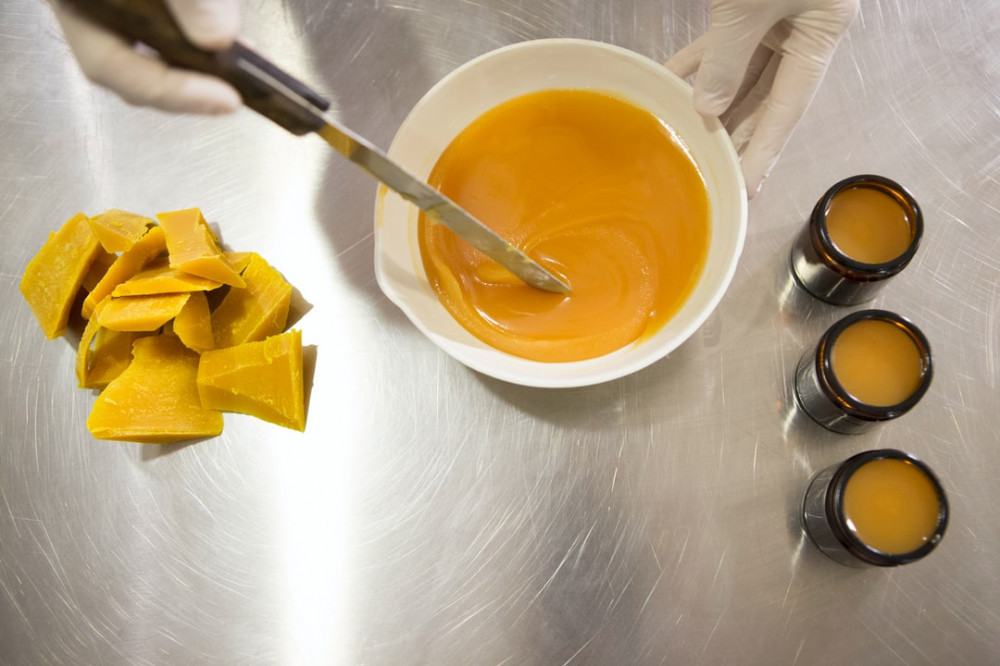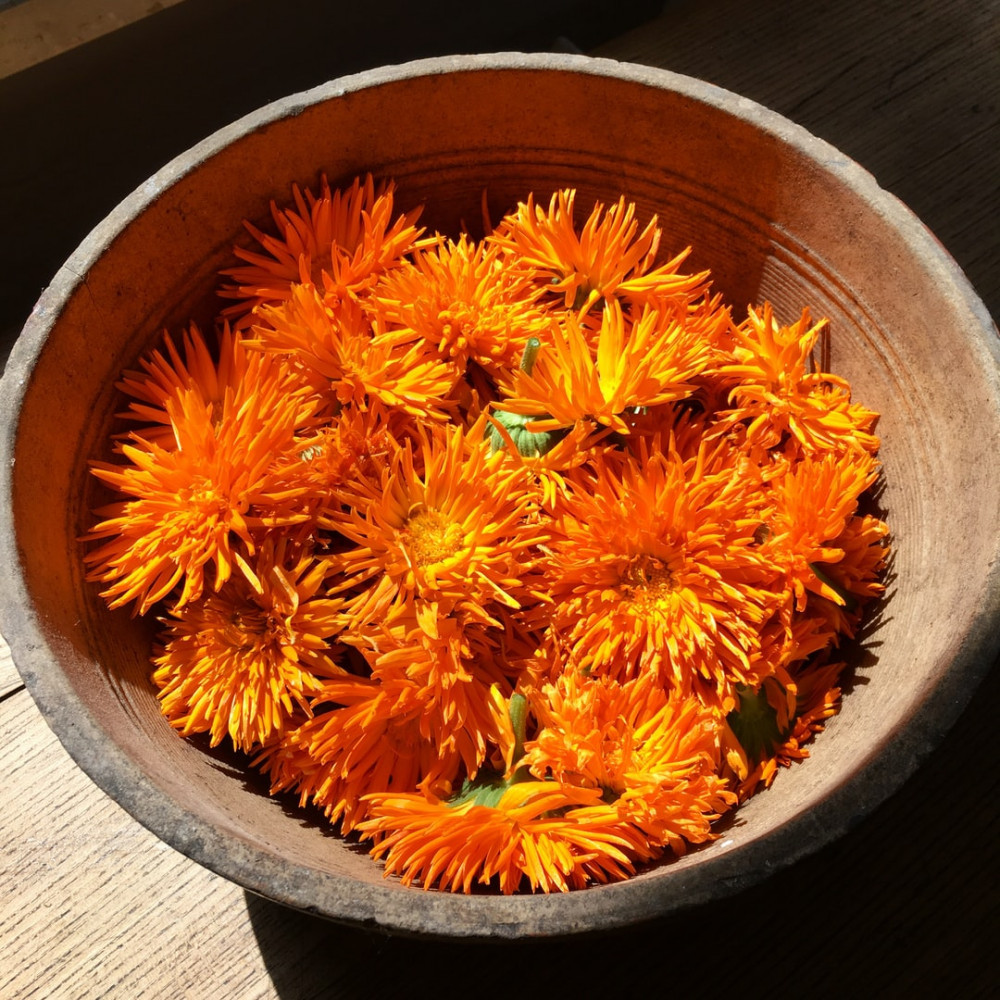 Calendula salve is a handy herbal first aid product, easy and inexpensive to make. If you have garden space, calendula is easily grown and makes a fabulous skin herb. The salve is useful whenever calendula would be used for the skin.
Calendula salve is a handy herbal first aid product, easy and inexpensive to make. If you have garden space, calendula is easily grown and makes a fabulous skin herb. The salve is useful whenever calendula would be used for the skin.
A salve is also called a balm or an ointment. It is a slightly hard texture and the hardness varies depending on how much wax is added. Salves are a combination of liquid oil with a wax, hard oil or butter or animal fat.
The general ratio of liquid oil to wax is 4:1. It is useful to increase hardness (using more wax) in hot climates or seasons, say with a 3:1 ratio and decrease the wax in cold weather.
How to Use Calendula Salve
Calendula salve can be applied straight onto the skin or mucous membranes. It can also be used as a moisturizer for the eye area or on the lips. Fingernails and cuticles will benefit from this salve as well. I find salves easier to work with at times than oils. Especially when you want the ointment to stay in place, a salve will be most practical. It is also a great traveler’s aid, serving many purposes as a first aid balm and natural skin care product.
Calendula salve can be used liberally, so application every hour would be fine. As long as you are experiencing improvement, continue with use. How often you reapply the salve will also depend upon the reason that you are using it. For example, if I were using it for a diaper rash, I would reapply with every diaper change, so every 3 to 4 hours. If it were for a painful brush burn on my knee, I may reapply more often, every hour or two.
Calendula Salve Recipe
 All the ingredients can be purchased here.
All the ingredients can be purchased here.
1) Obtain high quality calendula blossoms, garden grown is best and high quality dried will make a nice salve too.
2) Choose the carrier oil for the salve. I find extra virgin olive oil to be a great all-purpose oil with many medicinal qualities. It is a bit heavy so if you want a lighter final product, experiment with other oils like sweet almond or apricot kernel.
3) Next, make the herbal oil. There are a number of ways to do this. Check out the article Herbal Oils for instructions.
4) Once you have a calendula oil prepared, it is time to make the salve. These instructions assume you are using beeswax. The same process will be used for other hard waxes or oils but the ratio may differ somewhat so double check those measurements or do some experimenting.
5) Set up your double boiler, which is a pan that has a few inches of water in it to which you will add the measuring cup with oil and beeswax. I like to use Pyrex measuring cups because they are tempered.
If you want to make 5 ounces of finished salve, you will use 1 ounce of beeswax and 4 ounces of calendula-infused oil by volume.
6) Pour the oil into a measuring cup to the 4 ounce mark.
7) Grate the beeswax and add enough to raise the level of oil to the 5 ounce mark.
8) Next set this in the double boiler pan, turn the flame on low and allow the water to come to a simmer.
9) Stir the mixture with a chopstick to hasten the melting of the beeswax and distribute it evenly. The heat should be kept on low, as high heats degrade oils and will lessen the medicinal effects of the salve. Keep checking on the mix and giving it a few stirs. You can check the heat by dipping the chopstick and lightly touching the underside of your arm. It should be warm but not burning.
*A tip to check the hardness of the salve is to dip the chopstick into the mix and put it in the freezer for a few minutes. This will be close to the consistency of the final salve.
10) When all the beeswax is melted, pour it into a jar. Here I prefer glass or tin. If you wanted to add essential oils to the salve, now would be the time to do it.
*Another tip is that often salves will form a dip once they settle. If you want an even surface, save a bit of salve mix in your cup. After the salve has hardened, you can reheat the salve in the cup and pour it on top for an even surface.
